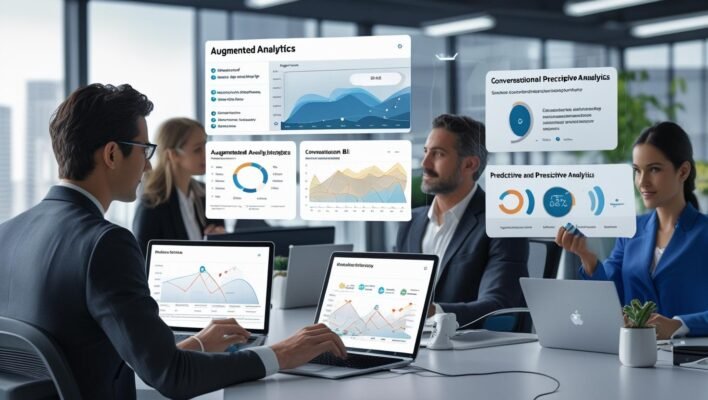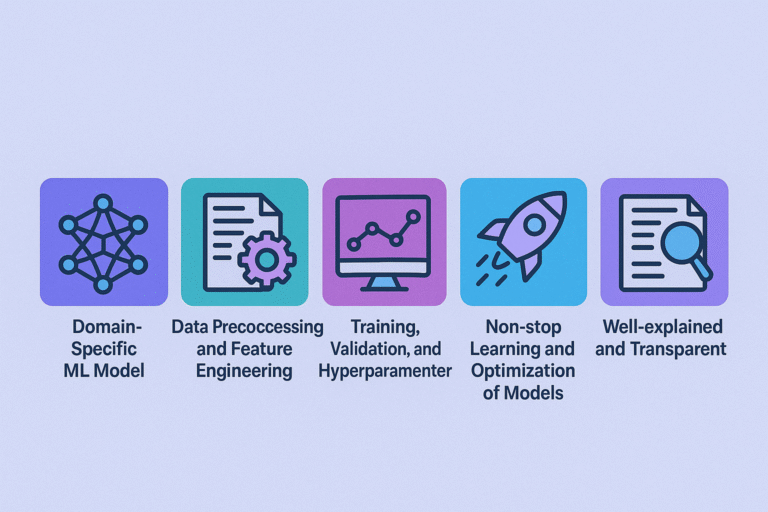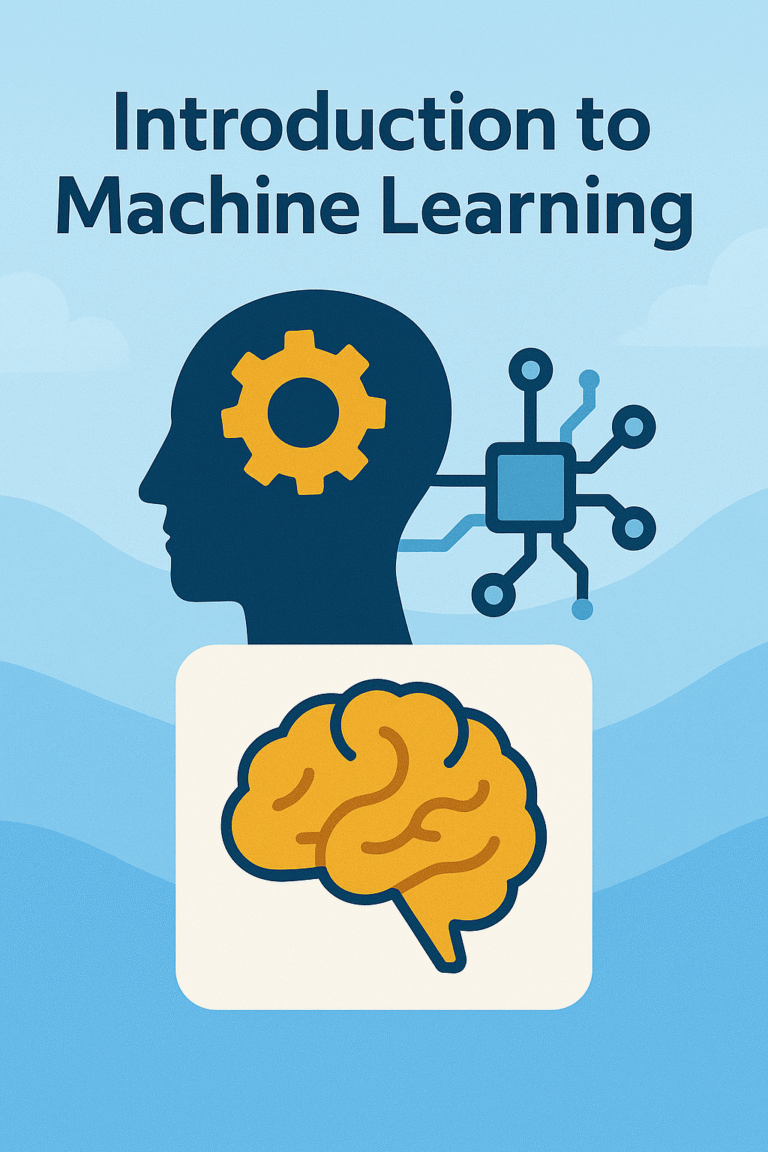In 2025, interface with an avalanche of data from sales, customer interactions, operations, and social media. Collecting data is one thing; turning it into thoughtful, timely decisions is what separates winners from laggards. That’s why you need the top 10 Business Intelligence platforms that are indispensable. Now, infused with artificial intelligence, they offer more than hindsight; they deliver foresight, guidance, and automation.
Subsequently, the top 10 Business Intelligence platforms in 2025became a game-changer in the global AI market value, which is approximately $391 billion, expanding at a 35.9% CAGR and expected to quintuple by 2030. As a result, approximately 97 million professionals are expected to work in the AI sector. Consequently, 83% of companies now prioritize AI within their strategies. Accordingly, Forbes notes that 97% of business leaders report a positive ROI from AI deployments. Meanwhile, the global AI market is projected to reach $243.7–$244 billion this year. These numbers highlight AI’s central role in modern BI strategies.
Top 10 Business Intelligence Platforms in 2025
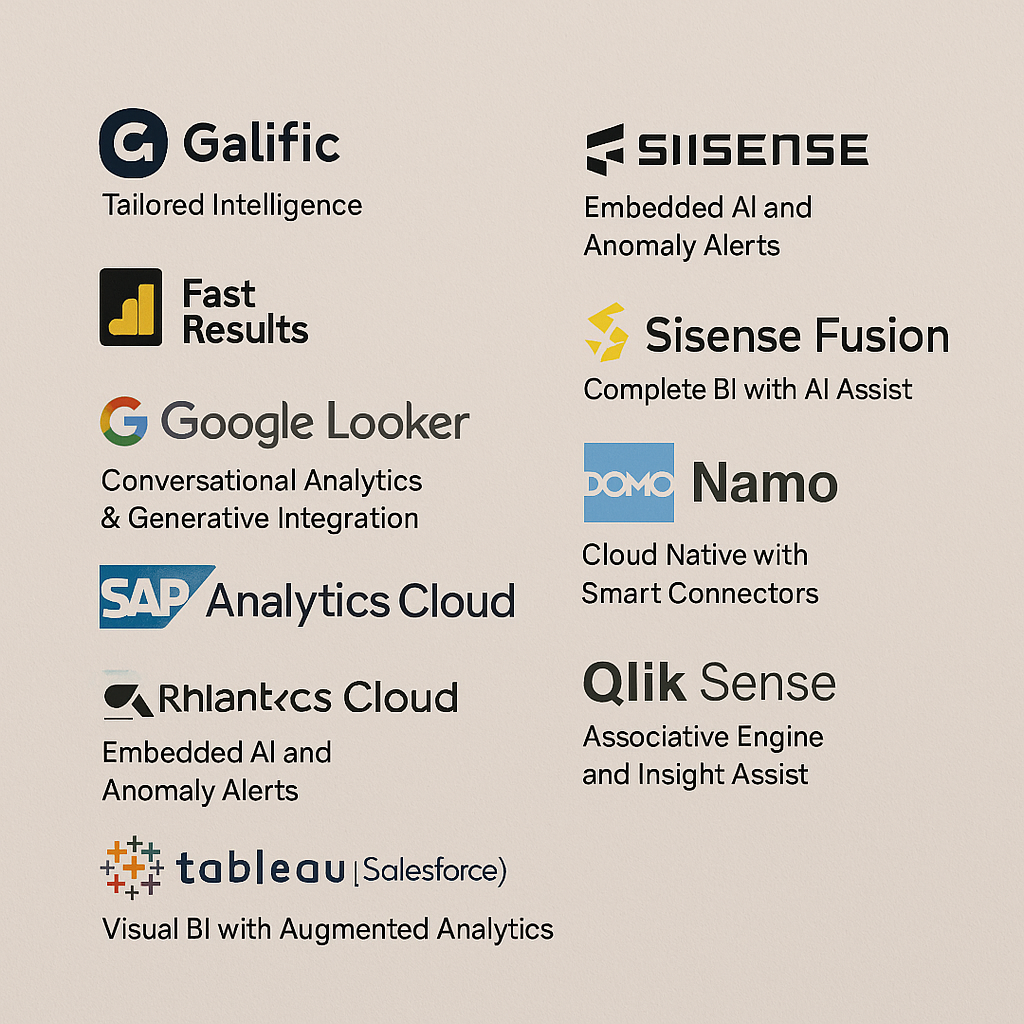
Here are the top 10 business intelligence platforms in 2025.
1. Galific – Tailored Intelligence, Fast Results
Galific stands out among the top 10 business intelligence platforms for offering bespoke solutions that directly address a client’s unique data challenges. For example, capturing abandoned cart revenue, alerting to unusual behavior in real time, or generating analytical reports automatically, Galific boosts ROI with precision. As a result, clients report savings of up to 50% in time and cost, a monthly recovery of $ 50,000 in lost revenue, and significant time savings in finance and operations. Moreover, their combination of scalable pipelines and secure governance ensures businesses can trust the insights without sacrificing speed or quality.
2. Microsoft Power BI – Predictive and Collaborative Analytics
Power BI remains at the forefront by integrating AI, which includes demand forecasting and anomaly detection capabilities through the “Copilot” assistant. As a result, companies claim the tool yields a massive ROI due to its affordable cost and smooth integration with Microsoft Office. Moreover, Copilot-assisted report generation, automated trend forecasting, and bright visuals. Provides industrial AI capabilities at scale for all types of teams.
3. Google Looker – Conversational Analytics & Generative Integration
As evidence of its industry leadership, the Google Looker platform secured a position in the 2025 Gartner Magic Quadrant. Furthermore, it integrates generative AI through Google Gemini—a solution that enables users to ask intricate questions in natural language, resulting in charts and slides generated on the fly. Moreover, Natural language Q&A, auto-generated visual reports, and semantic layer grounding. Simplifies insights for non-technical users using trusted enterprise data.
4. SAP Analytics Cloud – Planning with Predictive Power
In particular, SAP’s AI Conscientious Smart Suggestion for Scenario Planning, Anomaly Detection, and data correlation in Analytics Cloud. As a result, the forecasting engine empowers finance and operations teams to plan with confidence. In addition, predictive functions, advanced planning models, and risk analytics bridge BI and planning workflows together with intelligent forecasting tools
5. SAS Viya – Cloud AI and Trustworthy Analytics
SAS Viya is a cloud-native AI and analytics platform, supporting Python, R, and LLMs. Additionally, it offers predictive modeling, coupled with auditability mechanisms such as bias detection and model explainability. Moreover, it includes LLM integration, bias detection, econometric forecasting, and a low-code interface. Additionally, it features a solution for regulated industries, where transparent and robust analytics are a necessity.
6. Sisense Fusion – Embedded AI and Anomaly Alerts
Sisense Fusion embeds AI analytics into applications and workflows. As a result, its machine-learning-powered dashboards detect anomalies and perform predictive modeling. Moreover, it offers native integration with key elements of the data ecosystem, including AWS, Azure, and Snowflake, among others. Additionally, features include anomaly detection, alerting, predictive scoring, and embedding.
Enables proactive decision-making and data operations.
7. Oracle Analytics Cloud – Complete BI with AI Assist
Analytics Cloud is an end-to-end BI solution with AI for data insights. Consequently, it coordinates predictive models, automatic graph generation, and integrated reporting for a more innovative approach to decision-making. It ensures a singularly smooth analytics and AI experience across Oracle’s enterprise ecosystem.
8. Domo – Cloud Native with Smart Connectors
Domo offers a cloud-native BI platform focused on user experience and extensible applets. It supports AI-powered analytics through a wide variety of data connectors and built-in processing tools. Smart data connectors, real-time alerts, and governed self-service. Ideal for quickly surfacing insights from multi-source data in the cloud.
9. Qlik Sense – Associative Engine and Insight Assist
With its associative data indexing engine, Qlik Sense also integrates a new-age AI assistant called “Insight Advisor,” which guides users to insights and automatically creates visualizations for them. Insight recommendation, pattern recognition, and intelligent data navigation. This enables the discovery of insights that might be overlooked when following linear query paths.
10. Tableau (Salesforce) – Visual BI with Augmented Analytics
With data science tools, the most excellent data visualization tool is now a significant player, supporting creatives, automatic models that aid visualization through data analysis, and natural language queries. Being a division of Salesforce, it enjoys a robust ecosystem.
Automatic charts automatically suggest models for data and search via natural language queries.
AI Trends Reshaping BI Platforms
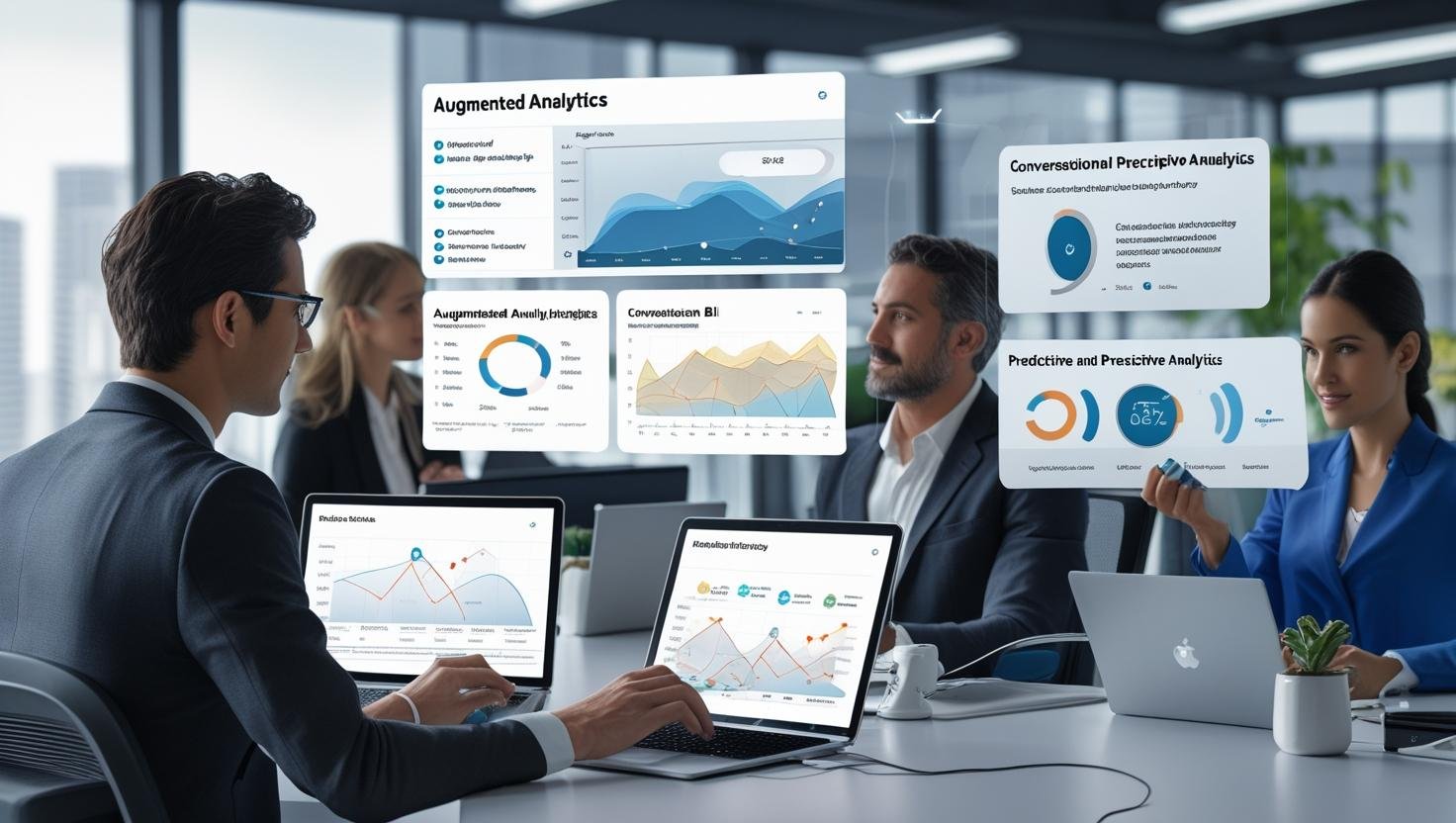
1. Augmented Analytics Is Standard
Currently, data preparation, insight generation, and alerting are often integrated with AI. Gartner has coined the phrase “augmented analytics,” empowering non-technical users to harness the power of model-building and recommendations.
2. Conversational BI Goes Mainstream
However, natural language understanding is now expected in leading platforms, enabling users to speak or type their queries and receive instant visuals and explanations.
3. Embedded AI at Workplace Scale
This means that BI is no longer restricted to stand-alone environments. BI platforms, such as Sisense and SAP, are embedding analytics into workflows and apps, allowing insights to permeate throughout operational activities.
4. Predictive and Prescriptive Analytics
AI-enabled recommendations increasingly permeate daily activities, suggesting what actions to take next, predicting what to expect from taking an action, or constraining reactive decision-making.
Market Statistics & Growth Indicators
- The global BI software market is expected to exceed $33 billion in 2025, driven by data acceleration and the integration of AI.
- Databricks, a data intelligence platform powering AI workloads, reports 60 % year-over-year revenue growth, with an over $3 billion run rate expected by year-end.
- The Forbes AI50 list and Gartner rankings indicate an increasing demand for platforms that combine data intelligence and generative AI.
How AI Improves Decision-Making
- Faster Data Preparation: AI cleans, integrates, and validates data, thereby freeing analysts and reducing the likelihood of errors.
- Smarter Insights: Insight engines identify trends and correlations, highlighting what matters, rather than requiring manual queries.
- User Empowerment: Language-driven interfaces enable non-tech users to ask questions confidently and receive accurate answers.
- Anticipatory Alerts: From real-time anomaly detection to providing warning signals to teams before issues escalate, much more substantial support is given towards managing them proactively.
- Forecasting with Precision: Seamlessly integrated predictive models reduce a certain amount of uncertainty while supporting function-wide data-driven plans.
Choosing the Right Platform in 2025
Consider these key factors when selecting a BI platform:
- AI depth: Does it offer truly augmented capabilities, insights, alerts, and forecasting?
- Ease of use: Can business users interact naturally, without training in SQL?
- Integration: Does it connect with current systems (cloud, databases, apps)?
- Governance & trust: Does it provide explainability and ethical model management?
- Scale & cost: What pricing model suits your size and consumption needs?
The Future of BI: Where It’s Headed
- Agentic AI & autonomous workflows: Future platforms will not just recommend actions but carry them out, launching campaigns, updating pricing, or reallocating resources proactively.
- LLM-enhanced analytics: Large Language Models will generate queries and visualizations via plain English, backed by context-aware reasoning.
- Cross-functional embedding: BI insights will be seamlessly integrated into CRM, ERP, and communication apps, creating an always-on analytics layer that enhances work.
Conclusion
Artificial Intelligence changes Business Intelligence in a way that even traditional dashboards are outdated in terms of quick decision-making. In 2025, a top-tier platform now automates data preparation, converts questions into visuals, predicts outcomes, and embeds insights across enterprise systems. It, therefore, provides for a BI that is strategic, timely, and available to all.
Whether it is ThoughtSpot, Power BI, Looker, or another leading platform, AI is the key that makes BI not just descriptive but also predictive, active, and intelligent. Companies that embrace AI capabilities, starting with clear objectives, solid governance, and robust training, will be the ones leading in operational efficiency, innovation, and rapid decision-making.

